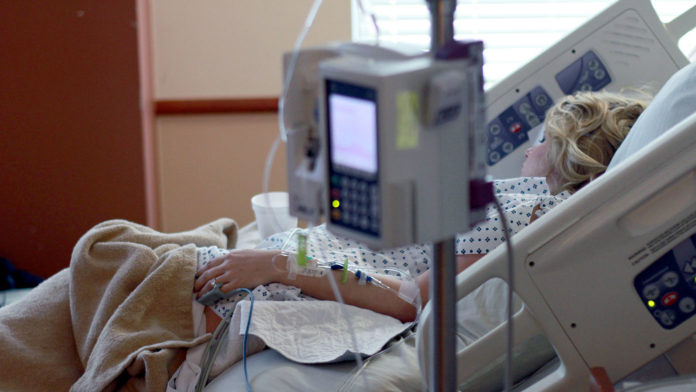Just like how a screen is a visual interface that allows users to connect with technology, sounds can form auditory interfaces when devices need to send out alerts and alarms. In our hospitals, medical alarms are an important cue for healthcare providers to respond to changes in their patients’ conditions as they arise.
So it may surprise many to learn that medical alarms have been cited by the Emergency Care Research Institute as one of the top ten health technology hazards four times, landing twice in the top spot.
According to self-professed audio geek Michael Schutz, associate professor of music cognition/percussion at McMaster University, that has a lot to do with bad sound design. Finding better ways protect patient well-being could begin with studying music to send out more effective auditory alerts.
At the root of the problem is that medical alarms regularly set off an annoying cacophony of noise.
“The question that keeps me up at night is this: why does a multi-billion dollar industry vital to our health and well-being use sounds no more sophisticated than that dump truck that backs up outside my house every Monday?” asked Schutz in his TEDxMcMasterU Talk.
“Part of the problem is really just the name, because when we call them medical alarms they sound like they should be annoying and urgent things, like (how) a fire alarm should be annoying. But a fire alarm goes off rarely, and when it does you have to act immediately. And that’s really the opposite of the situation with these medical alarms because we know patients generate hundreds of medical alarms per day, and rarely do they require immediate attention.”
As a result, in a routine day, several medical alarms can be missed simply because they are so frequent that human beings tend to tune them out.
Even worse, alarms can be so loud and distracting that healthcare providers often end up turning the volume down so that they can concentrate on the complex procedure they’re trying to perform. And if they’re left at these low volumes and another emergency arises down the line, an urgent event can be treated too late, and this can have deadly consequences for patients.
Still, audible tones play an important role in quickly communicating important information.
“You’re probably wondering, if the sounds are really this bad why do we even use these tones? Why not use speech sounds, or a visual display like a phone?” added Schutz.
“Well the thing is, these tone sequences are actually ideally suited for the kinds of complex real-time information that doctors and nurses need to keep us safe. Relative to speech sounds, they lead to faster recognition, and they also prevent patients from confusion over misunderstanding for messages they’re not really equipped to get. Because they’re based on sounds, doctors can keep their eyes where they need to be.”
That being said, Schutz still believes there’s lots of room for improvement. Medical alarms could benefit from melodic structures that borrow from the musical repertoire of sounds. Unlike alarms, music is designed to be delightful to listen to. These are sounds that a person could listen to all day long, and composing them with structures like repeated notes and easily recognizable intervals — similar in concept to a jingle or a ringtone — could make medical alarms easier distinguish from one another.
Drawing on the vast human knowledge of music, Schutz’s research also delves into the science of “composing” a memorable alarm — training users with and without musical training to correctly recognize a series of alert sounds, and associate them with the right type of medical event. His team looks for patterns that lead to the greatest number of misidentified events, honing in on the most effective sound designs.
These musical medical alarms could also enhance the patient experience by creating a more restful auditory environment in which to heal.
This is a beautiful example of how the arts can have an impact on the sciences, contributing to the human experience while serving a very practical purpose, allowing important medical work to be done without the immediate urge to silence the alarm.





































